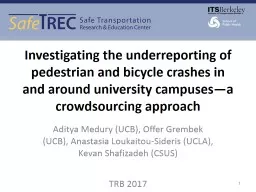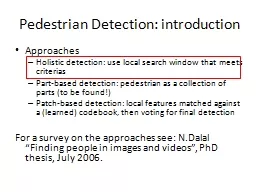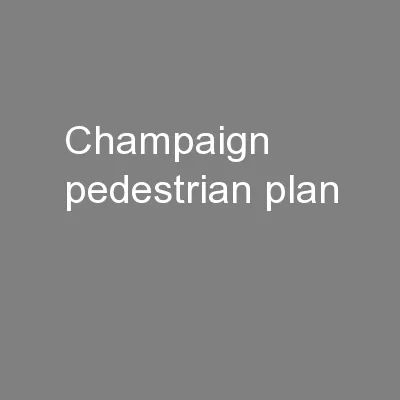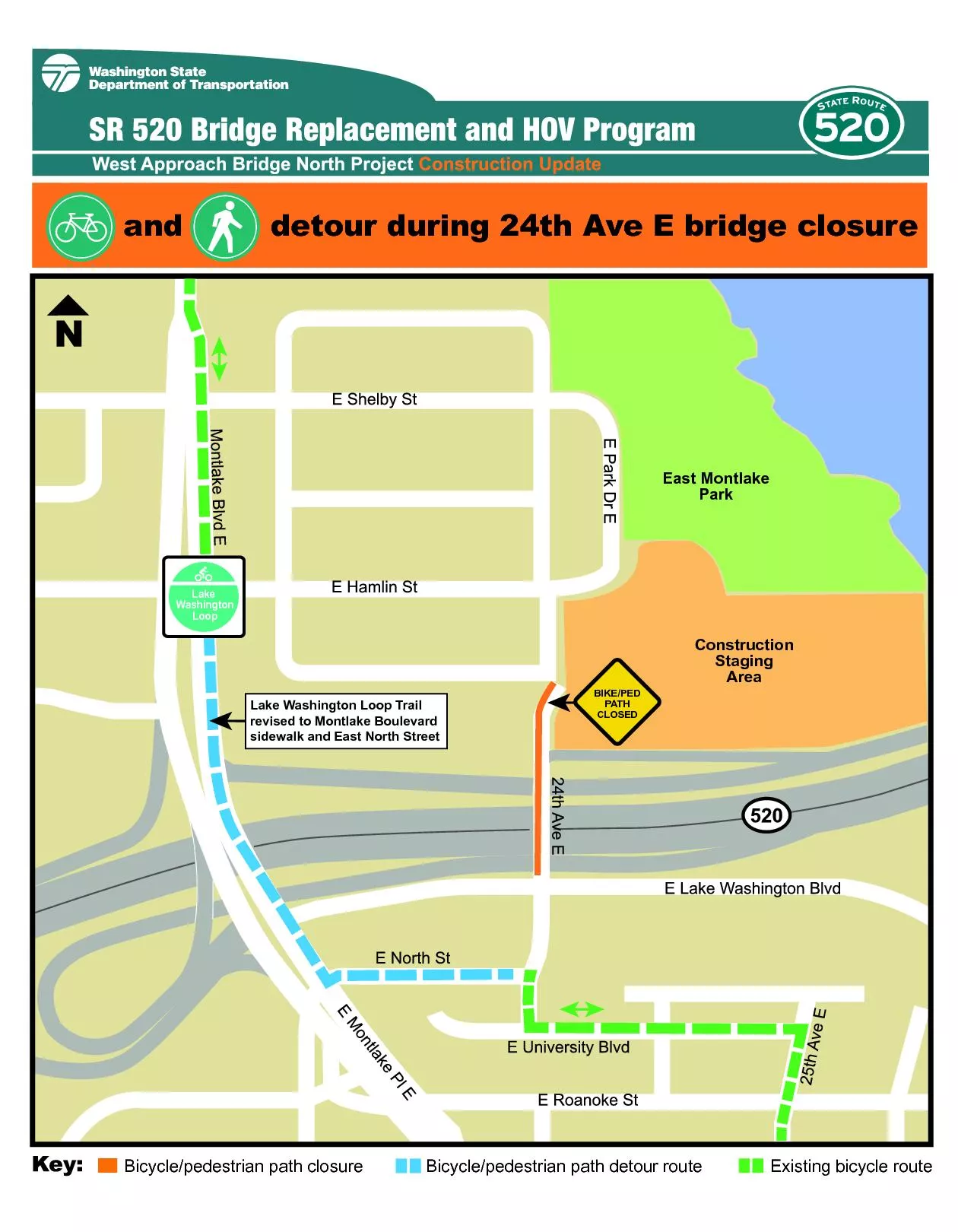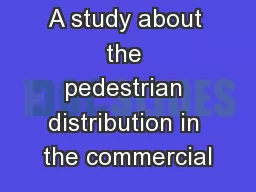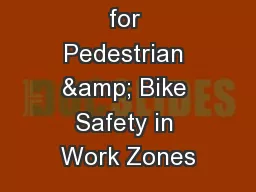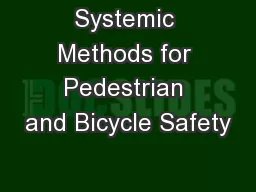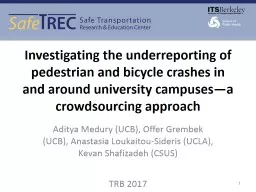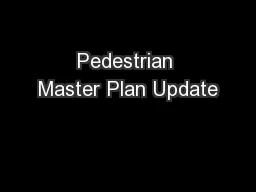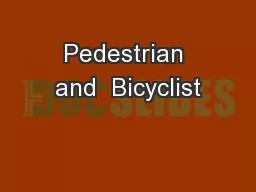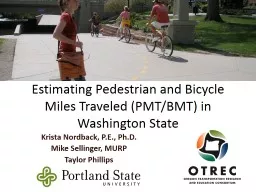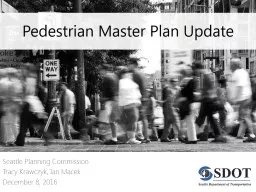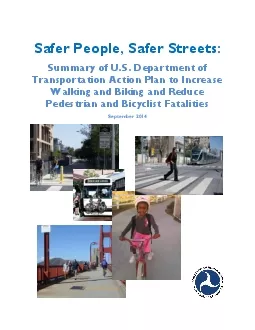PPT-Investigating the underreporting of pedestrian and bicycle
Author : trish-goza | Published Date : 2017-07-27
crowdsourcing approach Aditya Medury UCB Offer Grembek UCB Anastasia Loukaitou Sideris UCLA Kevan Shafizadeh CSUS TRB 2017 1 Why Crowdsource Traffic Safety
Presentation Embed Code
Download Presentation
Download Presentation The PPT/PDF document "Investigating the underreporting of pede..." is the property of its rightful owner. Permission is granted to download and print the materials on this website for personal, non-commercial use only, and to display it on your personal computer provided you do not modify the materials and that you retain all copyright notices contained in the materials. By downloading content from our website, you accept the terms of this agreement.
Investigating the underreporting of pedestrian and bicycle: Transcript
crowdsourcing approach Aditya Medury UCB Offer Grembek UCB Anastasia Loukaitou Sideris UCLA Kevan Shafizadeh CSUS TRB 2017 1 Why Crowdsource Traffic Safety Data. Author. : . Ioannis. . Karamouzas. et al.. Presented. . by. : Jessica . Siewert. Content of presentation. Previous work. The method. Implementation. Experiments. Assessment. Developments since . Introduction – Previous work. Detection: . introduction. Approaches. Holistic detection: use local search window that meets . criterias. Part-based detection: pedestrian as a collection of parts (to be found!). Patch-based detection: local features matched against a (learned) codebook, then voting for final detection. CHAMPAIGN CITY COUNCIL • STUDY SESSION • JULY 9, 2013. Why develop a Pedestrian Plan?. Council goals support creating a pedestrian plan. Council Goal 1: . “Our City Fosters Quality of Life. for All Citizens”. Bicycle/pedestrian path detour route Bicycle/pedestrian path closureConstructionStagingArea Lake Washington Loop Trail PATH detour during 24th Ave E bridge closure Washington East MontlakePark buildings. by the location of stores and the structure of the walking space. Masaya FUJITANI, Tatsuya KISHIMOTO. Ref 8094. Keywords . visibility graph analysis, commercial building, store floor areas, multiple regression analysis, models.. Logistics. Health and safety . (restrooms, . exits, . etc.). Please silence cell phones. . Please ask questions. Breaks . / . Lunch. Sign-in sheet. 2. Self Introductions. . Your Name, Organization & Position. Topics. Systemic Introduction. Methodologies and tools. Potential countermeasures. Examples. Systemic Introduction. Traditional. Systemic. Choosing an approach to improve safety. Traditional Crash-Based Approach. “crowdsourcing” . approach. Aditya Medury (UCB. ), Offer . Grembek. (UCB), . Anastasia . Loukaitou. -Sideris (UCLA), . Kevan. . Shafizadeh. (CSUS). TRB 2017. 1. Why Crowdsource Traffic Safety Data?. Seattle Planning Commission. Michelle Marx, Ian Macek, Kevin O’Neill. May 26, 2016. Our mission, vision, and core values. Committed to . 5 core values . to create a city that is:. Safe. Interconnected. Safety at Railroad Grade . Crossings. Paul . Metaxatos and P.S. Sriraj. Urban Transportation Center. University of Illinois at Chicago . Email. : pavlos@uic.edu. 62nd . Annual . Illinois Traffic Engineering and Safety Conference. Estimating Pedestrian and Bicycle Miles Traveled (PMT/BMT) in Washington State Krista Nordback, P.E., Ph.D., PSU Mike Sellinger, MURP, Alta Planning & Design Taylor Phillips, PSU Overview Purpose Pedestrian Master Plan Update Seattle Planning Commission Tracy Krawczyk, Ian Macek December 8, 2016 Our mission, vision, and core values Committed to 5 core values to create a city that is: Safe Interconnected A Message about Pedestrian and Bicyclist Safety Americans are increasingly walking and riding bicycles to commute run errands get exercise access public transportation and save money At the US Departm related injuries; an additional 13,300 receive emergency treat ¥ Helmet usage varies greatly by region of the state, by location and by age. ¥ Children between the ages of 6-18 are significantly le
Download Document
Here is the link to download the presentation.
"Investigating the underreporting of pedestrian and bicycle"The content belongs to its owner. You may download and print it for personal use, without modification, and keep all copyright notices. By downloading, you agree to these terms.
Related Documents

